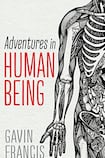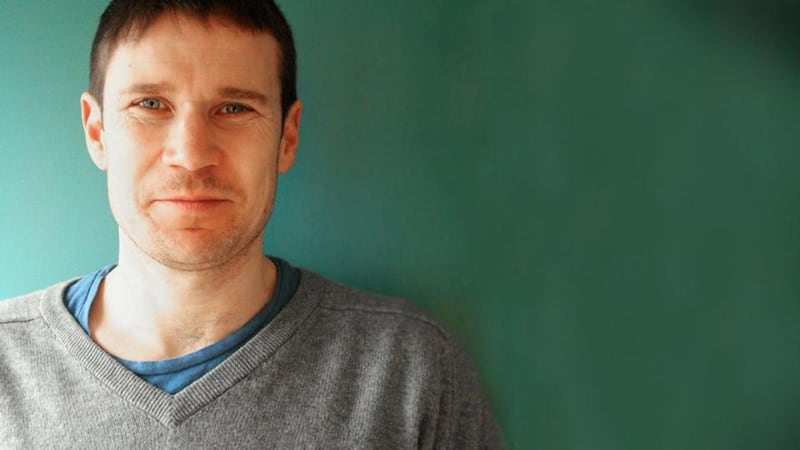
Few people skip happily off to the proctologist. The genito-urinary waiting room is, for most patients, not a place for breezy conversation. But to Gavin Francis, an Edinburgh general practitioner, the humble eye examination is among the most awkwardly intimate of medical procedures.
“My cheek often brushes theirs,” he writes, “and usually both of us, through politeness, end up holding our breath”. The effort repays any bashfulness: as Francis describes it, the eye is the window to a whole living universe.
“If the central retinal vein is blocked, the resultant scarlet haemorrhages are described in the textbooks as ‘stormy sunset appearance’. I sometimes see pale retinal spots caused by diabetes, and they’re reminiscent of cumulus clouds. In patients with high blood pressure the branching, silvered shine of the retinal arteries resembles jagged forks of lightning. The first time I looked into the curved vault of a patient’s eyeball I was reminded of those medieval diagrams that showed the heavens as an upturned bowl.”

It is difficult to decide whether Gavin Francis is a travel writer who moonlights as a doctor or a doctor who travels and writes on the side. But if he is as good at slinging pills as he is at writing landscapes – geographical and anatomical – then his patients can count themselves fortunate.
His last book, Empire Antarctica, was a meditative account of the year he spent as a volunteer doctor at a remote British ice station. It was named Scottish book of the year and made his reputation as a writer of thoughtful and entertaining non-fiction. Although classified as travelogue, it was travel with a twist: for most of the book the author stays rooted in one confined space, watching the universe – the star-splashed polar night – wheeling around him.
Francis's latest work, Adventures in Human Being, is another variation on the travelogue form: this time the region he explores is that most mysterious and compelling of landscapes: the human body.
In a series of deft essays on anatomy, starting with the head and working down to the feet, Francis moves skilfully between the scientific and the aesthetic, anatomical fact and emotional consequence, to craft a profound yet highly readable account of the intimate, inextricable relationship between the physical body and what some still call the soul.
In a chapter on the heart he talks of angor animi, "anguish of the soul", the conviction felt by many people experiencing cardiac arrest that they are about to die. In some cases, he says, the exhibition of angor animi is enough to justify making chest scans of otherwise asymptomatic patients.
Meat and plumbing
"Since Descartes we've had a tendency to believe that from the chin down we are just meat and plumbing. Angor animi suggests that there is more to us than that; that in some way we become aware when a valve is no longer working . . ."
He recounts how treatment of a particularly debilitating type of vertigo – that physical embodiment of existential crisis – was recently revolutionised by an American ear nose and throat specialist, John Epley, who had guessed that the crippling dizziness and nausea was caused by chalky sediments rolling in the inner ear.
Previous treatments relied mainly on surgery. Using a hosepipe to model the semicircular canals, Epley devised in his garage a series of head and neck movements – lean all the way back, look left, straighten, lean back, look right etc – that would progressively decant the errant particles out of the labyrinthine inner ear. Without using scalpel or drugs he achieved an on-the-spot cure rate of 90 per cent.
An astute jackdaw, Francis raids the sweep of history and art and literature – from the siege of Troy to the Brothers Grimm to Virginia Woolf – for gems with which to decorate his theme.
It was, he points out, Leonardo da Vinci's dissection of corpses that allowed him to define and comprehend the web of muscles that shapes the human face. From this knowledge he created the living expressions we see in the Mona Lisa and The Last Supper. "Other Renaissance Last Suppers had been rather staid, showing the apostles expressionlessly eating their dinner."
The whole emotive range of human facial expression – our literal interface with our fellow beings – is controlled, Francis tells us, by five branches of the seventh nerve: the temporal, zygomatic, buccal, mandibular and cervical nerves. Or as medical students are mnemonically taught, “two zombies buggered my cat.”
Eclectic yet accessible, Francis’s essays are fleshed out with personal anecdotes, drawn from his doctor’s stock of life-and-death dramas and tales of bleak comedy. As a young intern he once treated a pleasant but highly embarrassed young man who had got a ketchup bottle – we infer it was Heinz – lodged in that place where things so often get lodged in emergency room stories.
“Looking at the X-ray, it undoubtedly had an aesthetic value: the grainy forms of bone and bowel against the moulded artistry of glass and metal. There was a pop-art appeal to the juxtaposition of a mass-produced bottle against the organic shape of Mr Duletto’s [names were of course changed] pelvis.” Alas, while Francis was arranging the bottle’s extraction some other clinician made off with the coveted X-ray.
The brute fact of death, which could so easily overwhelm a meditation on the delicate mysteries of life, is introduced with matter-of-fact respect. A particularly fine passage in a chapter on the womb describes the death of a woman, bleeding out from uterine cancer, while her daughter, the child of that uterus, and her pregnant granddaughter rally around.
Francis lets his situations talk for him, with no platitudes about “the circle of life”. When a teenage girl is brought in to hospital suffering from a severe asthma attack, and one by one the treatments fail, her parents elect to save what they can and send for the donor forms.
“Of her major organs only her heart and lungs – which had brought her to the gateway of death – and her brain – which had travelled too far into darkness to make it back to the light – were buried with her.”







